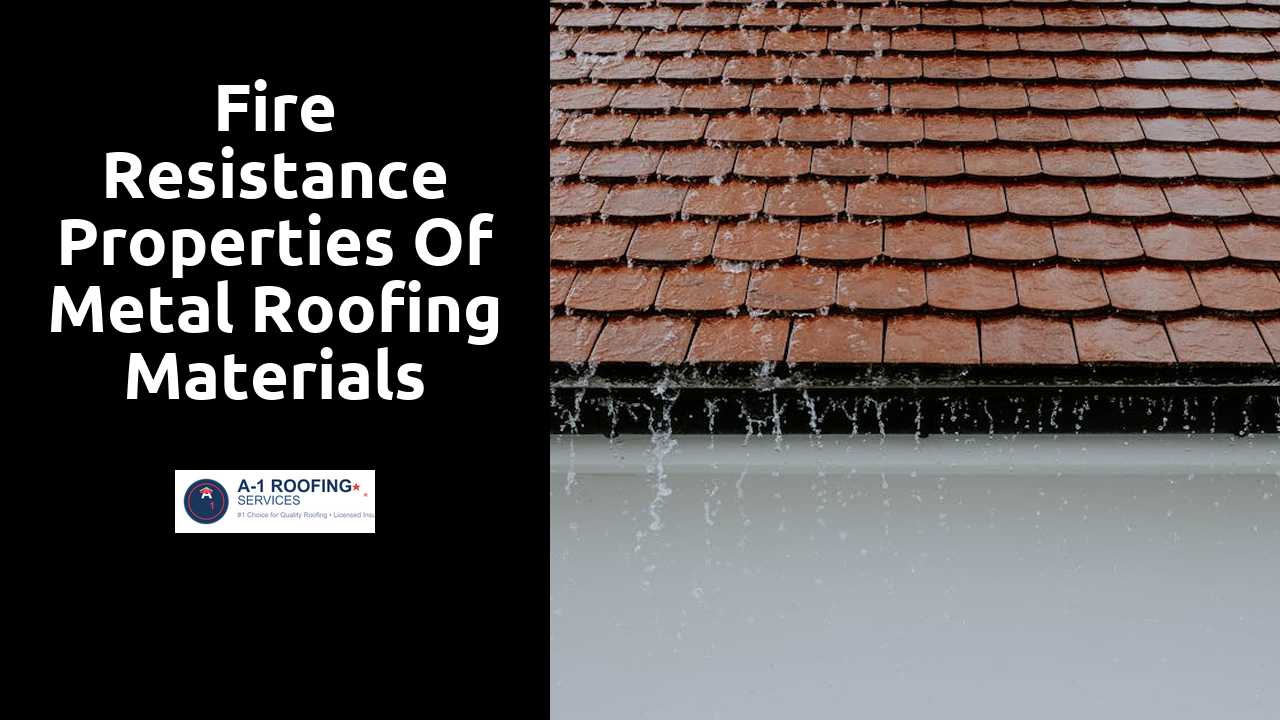
Fire Resistance Properties of Metal Roofing Materials
Table Of Contents
Installation and Maintenance
Proper installation of metal roofing is vital to achieving optimal fire resistance. Ensuring a tight seal and correct positioning helps reduce the risk of fire penetration. Using non-combustible underlayment materials can also enhance overall protection. It's essential to follow manufacturer guidelines closely during installation. This approach minimizes gaps and vulnerabilities that could potentially allow flames to reach the underlying structures.
Regular maintenance plays a critical role in preserving the fire-resistant qualities of metal roofs. Routine inspections help identify issues like rust or debris accumulation, which can affect performance. Any damages, such as loose panels, should be addressed promptly to maintain integrity. Keeping the roof clean and ensuring that drainage systems function efficiently contributes to the overall longevity and safety of the roofing system. Attention to detail during maintenance helps uphold the fire-resistant features essential for protecting structures from wildfires or other fire hazards.
Here is a great resource for anyone looking to expand on this topic.
Best Practices for Fire Resistance
Choosing the right materials is crucial for enhancing fire resistance in roofing. Opt for metal roofing products that have been tested and rated for fire performance. Materials like class A-rated steel and aluminum resist ignition and can withstand high temperatures. Proper installation also plays a vital role; ensuring that all seams and edges are sealed reduces potential vulnerabilities where heat could penetrate.
Regular maintenance is necessary to uphold the fire-resistant properties of metal roofing. Routine inspections should focus on checking for any damage or wear that could compromise protective coatings. Keep the roof clean, removing debris such as leaves and branches that can accumulate and pose a fire hazard. Consulting with a professional about maintenance schedules ensures that any issues are addressed promptly, keeping the roof effective in fire resistance over the long term.
Impact of Climate on Fire Resistance
Climate plays a significant role in determining the fire resistance of metal roofing materials. Regions that experience high temperatures and prolonged dry spells often face increased risks of wildfires. In such areas, the selection of roofing materials becomes crucial, as some metals can withstand high heat better than others. Additionally, wind patterns can influence how embers land on a structure, further impacting its vulnerability.
Conversely, in humid climates, moisture accumulation can lead to corrosion, affecting the longevity and fire-resistant properties of metal roofs. It is essential to consider local climate factors when choosing roofing materials. Products with appropriate coatings can enhance protection against rust and fire, ensuring durability regardless of environmental conditions. Understanding these dynamics helps property owners make informed decisions about roofing materials that align with their specific regional challenges.
Adapting to Different Environmental Conditions
Different regions present unique environmental challenges that can impact the fire resistance of metal roofing materials. Areas prone to wildfires require materials that not only resist ignition but also undergo treatments to further enhance their protective qualities. Metal roofs in these settings should feature coatings that reflect heat and resist ember penetration. Local building codes often dictate the minimum fire resistance standards, necessitating a careful selection of products tailored to the specific risks of the environment.
Moreover, weather conditions such as high humidity or heavy snowfall can affect the durability and maintenance of roofing materials. In humid climates, corrosion resistance becomes critical, prompting the need for galvanized or specially coated metals. In snow-prone regions, roof design must factor in snow loads and ice dam prevention to maintain fire resistance efficacy. Adapting roofing materials and strategies to address these variables lays the foundation for not only enhanced fire safety but also prolonged roof lifespan.
Cost Considerations
Investing in metal roofing materials often involves evaluating the initial cost against long-term benefits. Although the upfront expense may be higher than traditional roofing options, metal roofs typically offer extended durability and reduce maintenance needs. Their longevity can lead to significant savings over time, especially when considering the potential costs associated with repairs or replacement of less durable materials.
When assessing cost, it is important to factor in the energy efficiency of metal roofs. These materials reflect solar heat, which can result in lower cooling costs, particularly in warmer climates. Additionally, many metal roofing systems are recyclable, further enhancing their value proposition. Taking a comprehensive view of both immediate and future expenses can help homeowners make informed decisions regarding their roofing investments.
Evaluating Cost vs. Benefit
When evaluating the financial implications of installing metal roofing materials, potential homeowners should consider both upfront costs and long-term benefits. Initial expenditures for metal roofs can be higher than traditional materials like asphalt shingles. However, these roofs often last significantly longer, which translates into reduced replacement costs over time. Additionally, metal roofing typically requires less maintenance, further enhancing its cost-effectiveness.
Beyond mere longevity, fire resistance contributes to savings by potentially lowering insurance premiums. Many insurance companies offer discounts for homes equipped with fire-resistant materials due to the decreased risk of fire damage. Homeowners should weigh these potential savings against the initial investment to make informed decisions about their roofing options. Evaluating the durability, longevity, and safety features will provide a clearer picture of the overall value of metal roofing in relation to its costs.
Related Links
Cost Analysis: Metal Roofing vs Traditional Roofing OptionsTop 5 Myths About Metal Roofing Debunked